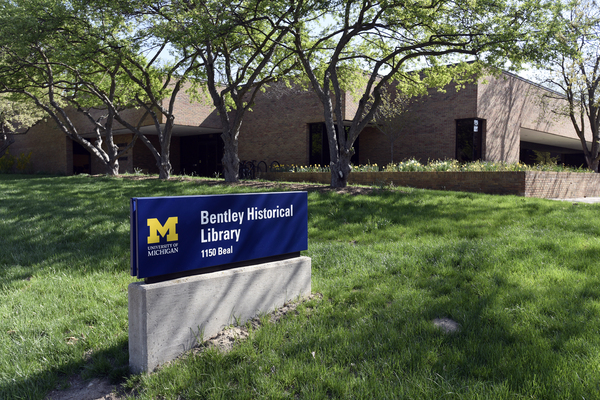University of Michigan unit dedicated to serving university students, staff and faculty, community members, and others of all gender identities who are facing educational, employment, or other life issues. Minutes, correspondence, audiovisual materials, topical files, and other records documenting the founding, public programs, research projects, day-to-day administrative activities, and individual staff members of the University of Michigan's Center for the Education of Women.
The Center for Education of Women collection consist of minutes, correspondence, topical files, reports, audiovisual materials, and other records documenting the founding, public programs, research projects, day-to-day administrative activities, and individual staff members of the University of Michigan's Center for the Education of Women.
The current CEW collection is primarily the result of a major reprocessing project that combined several new accessions with the pre-existing record group--itself the accumulation of several accessions--and which has resulted in a re-figured collection nearly double the size of the original. The first three subgroups and their major series have been retained, but some of the lower-level organization has been updated to reflect the fuller picture of the Center that the combined set of materials affords.
Documents within folders may be arranged either chronologically or reverse chronologically, based on the existing arrangement of the majority of materials (in both the pre-existing collection and in the newer accessions), and in some cases may adhere to the original filing order. Also, some files (e.g. most correspondence) were filed by calendar year (Jan-Dec.), while others (notably budgets, staff meetings, and program files) were filed by fiscal year. Unless otherwise noted, files arranged by academic year (indicated in the box list by dates such as '1990/91') run from July of the first year through June of the second year.
Researchers examining the CEW collection may also be interested in related files in the following other record groups at the University of Michigan's Bentley Historical Library: Institute on Gerontology, Michigan Initiative on Women's Health, Provost and Executive Vice President for Academic Affairs.
Additionally, researchers should note that there are overlaps between the 'Topical' series in the 'Central Office Files' subgroup and the files of CEW staff members in the 'Individual Staff Files' subgroup. Some examples are provided below:
- Counseling: Myra Fabian, Dorothy McGuigan, Vivian Rogers, and Patricia Wulp
- Evening Program (especially 1982 and later): Patricia Wulp
- Group Counseling and Workshops (e.g., Career Decision Making, Assertiveness, the Step Before the Job Search, etc.): Myra Fabian, Barbara Anton, and Patricia Wulp
- Programs by Academic Year: Patricia Wulp
- Publicity: Louise Cain, Patricia Wulp and Dorothy McGuigan
- Research (including: non-traditional student surveys, Women in Science (and Engineering) studies, participant data, and especially Ford Grants): Jean Campbell, Carol Hollenshead, Jean Manis, Hazel Markus, and Dorothy McGuigan
- Sexual Harassment Implementation Team and other Sexual Harassment materials: Sue Kaufmann
- Women's Initiative Group (WING): Myra Fabian, Sue Kaufmann, Vivian Rogers, and Patricia Wulp
Due to the decentralized nature of the CEW records, researchers are encouraged to check for headings in each of the subgroups and series, even for subjects not listed above.
Acronyms used frequently in the records and in this finding aid include:
- CFW / COW -- UM Commission for Women (prior to 1972, the name was the Commission on Women)
- CURIES -- Cross-University Research in Engineering and Science
- GEO -- UM Graduate Employees' Organization
- IOG -- Institute of Gerontology (Joint UM/Wayne State program)
- LSA / LS&A -- UM College of Literature, Science, and the Arts
- MAWDAC -- Michigan Association of Women Deans, Administrators and Counselors
- MSA -- Michigan Student Assembly (UM student government)
- NAWDAC -- National Association of Women Deans, Administrators and Counselors
- NACME -- National Action Council for Minorities in Engineering
- NSF -- National Science Foundation
- OVPR -- UM Office of the Vice President for Research
- UM -- University of Michigan (Ann Arbor campus unless otherwise noted)
- WING -- UM Women's Initiative Group
- WIS / WISE -- Women in Science / Women in Science and Engineering, originally a CEW project that later spun off into its own unit)
